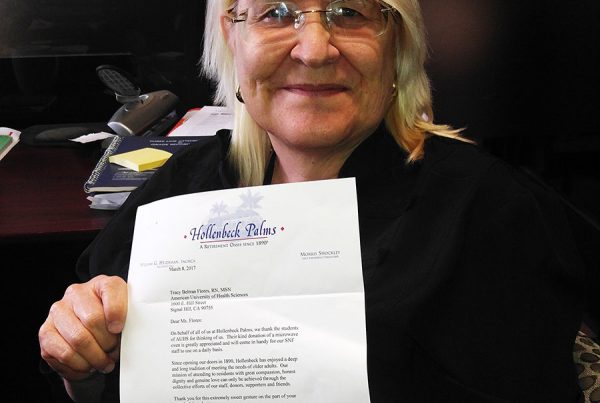Cannabis – Past and Present – Tribute to the Memory of Raphael Mechoulam
By John V. Schloss, Ph.D.
The medicinal properties of cannabis have a near 5,000-year history, going back to Emperor Shen Neng of China (2737 BC). Since then, cannabis has been thought to provide therapeutic benefits for gout, rheumatism, malaria, and memory. More modern potential uses include treatments for anorexia, emesis, pain, inflammation, multiple sclerosis, Parkinson’s disease, Huntington’s disease, Tourette’s syndrome, Alzheimer’s disease, epilepsy, glaucoma, osteoporosis, schizophrenia, cardiovascular disorders, cancer, obesity, and metabolic syndrome-related disorders.1
 How did such a ‘wonder drug’ become illegal in the United States? The origin of marijuana’s illicit status was the Marihuana Tax Act of 1937. Following the 1910 Mexican Revolution, anti-Mexican immigration sentiment and propaganda films against the intoxicating effects of smoking marijuana, like Reefer Madness, contributed to laws prohibiting its use.2 The intoxicating effects of marijuana led to many prohibitions and laws against recreational use of the plant, beginning with a decree by the Emir Soudoun Sheikouni of the Joneima in Arabia (1378 AD).3
How did such a ‘wonder drug’ become illegal in the United States? The origin of marijuana’s illicit status was the Marihuana Tax Act of 1937. Following the 1910 Mexican Revolution, anti-Mexican immigration sentiment and propaganda films against the intoxicating effects of smoking marijuana, like Reefer Madness, contributed to laws prohibiting its use.2 The intoxicating effects of marijuana led to many prohibitions and laws against recreational use of the plant, beginning with a decree by the Emir Soudoun Sheikouni of the Joneima in Arabia (1378 AD).3
Our current understanding of cannabis pharmacology comes from the pioneering work of Raphael Mechoulam (1930-2023), a recently deceased Professor of Medicinal Chemistry at Hebrew University. Prof. Mechoulam discovered and synthesized the psychotropic and non-psychotropic components of Cannabis sativa L., D9-tetrahydrocannabinol (THC), and cannabidiol (CBD).4,5 He also discovered the endogenous anandamide system as the basis for cannabis pharmacology (CB1 and CB2 receptors).6-8 The anandamide system involves diverting arachidonic acid, liberated by phospholipase A2 and converted by the cyclooxygenase (COX)/lipoxygenase pathways into pro-inflammatory prostaglandins, leukotrienes, and thromboxanes, by the formation of N-arachidonylethanolamide and other anti-inflammatory conjugates (anandamides). The pharmacology of cannabis plants is exceptionally complex, as there are almost 200 different naturally occurring cannabinoids and an equally complex mixture of terpenoids that can affect their pharmacology and bioavailability.9-11
- Kogan NM, Mechoulam R (2007) Cannabinoids in health and disease, Dialogues Clin Neurosci 9(4):413-30. https://doi.org/10.31887/DCNS.2007.9.4/nkogan
- Schlosser E (2004) Reefer madness: sex, drugs, and cheap labor in the American black market, Mariner Books, ISBN 10: 0618446702
- Johnson BA (2010) Addiction medicine: science and practice. Springer Science & Business Media. ISBN 978-1-4419-0338-9
- Mechoulam R, Gaoni Y (1965) A total synthesis of dl-Δ1-tetrahydrocannabinol, the active constituent of hashish, J Am Chem Soc 87(14):3273–3275. https://doi.org/10.1021/ja01092a065
- Lander N, Ben-Zvi Z, Mechoulam R, Martin B, Nordqvist M, Agurell S (1976) Total synthesis of cannabidiol and delta1-tetrahydrocannabinol metabolites, J Chem Soc Perkin 1 1976;(1):8-16.
- Pertwee RG (2006) Cannabinoid pharmacology: the first 66 years, Br J Pharmacol, 147(Suppl 1): S163–S171. https://doi.org/10.1038/sj.bjp.0706406
- Mechoulam R (2023) A delightful trip along the pathway of cannabinoid and endocannabinoid chemistry and pharmacology, Annu Rev Pharmacol Toxicol 63:1-13. https://doi.org/10.1146/annurev-pharmtox-051921-083709
- Devane WA, Hanus L, Breuer A, Pertwee RG, Stevenson LA, Griffin G, Gibson D, Mandelbaum A, Etinger A, Mechoulam R (1992) Isolation and structure of a brain constituent that binds to the cannabinoid receptor, Science 258(5090):1946-9. https://doi.org/10.1126/science.1470919
- Zheljazkov VD, Noller JS, Maggi F, Dale F (2022) Terpenes and cannabinoids yields and profile from direct-seeded and transplanted CBD-Cannabis sativa, J Agric Food Chem 70(34):10417–10428. https://doi.org/10.1021/acs.jafc.1c06912
- Birenboim M, Chalupowicz D, Maurer D, Barel S, Chen Y, Fallik E, Paz-Kagan T, Rapaport T, Sadeh A, Kengisbuch D, Shimshoni JA (2022) Multivariate classification of cannabis chemovars based on their terpene and cannabinoid profiles, Phytochemistry 200:113215. https://doi.org/10.1016/j.phytochem.2022.113215
- Johnson JV, Christensen A, Morgan D, Basso KB (2020) Chapter Eight – Gas chromatography/electron ionization mass spectrometry (GC/EI-MS) for the characterization of phytocannabinoids in Cannabis sativa, Comprehensive Analytical Chemistry, Volume 90, Pages 235-274. https://doi.org/10.1016/bs.coac.2020.05.003






